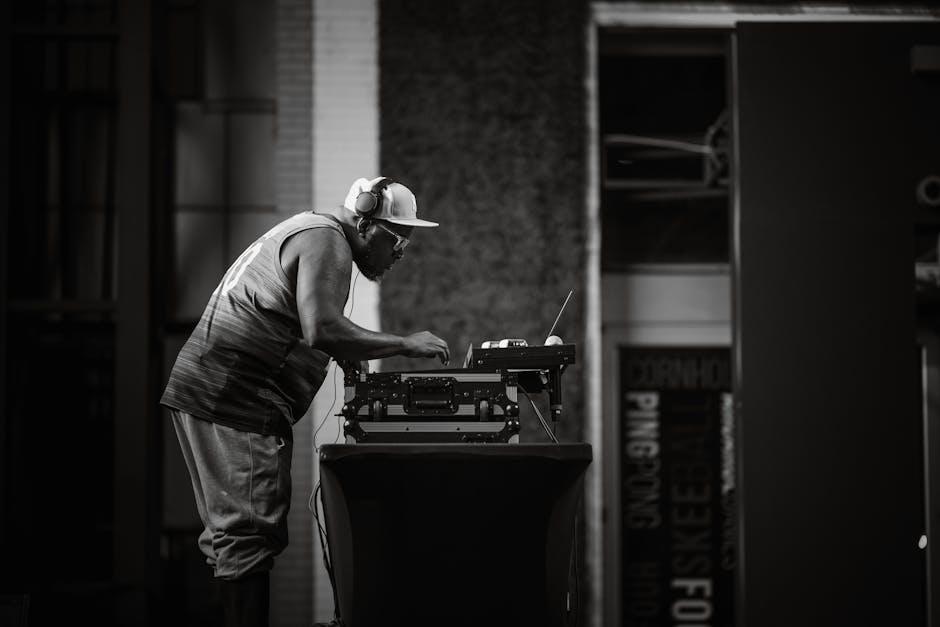In the dimly lit sanctuaries of post-production studios, where imagination melds with technology, sound engineers wield their craft like modern-day alchemists. Their mission? To conjure the ethereal and transport audiences to realms beyond the stars. As pivotal architects of auditory landscapes in sci-fi cinema, these experts blend innovation with artistry, transforming scripts into sonic odysseys. From the haunting echoes of alien worlds to the electric hum of futuristic cities, the atmospheric audio they create not only enhances the visual spectacle but also breathes life into the very fabric of the narrative. This article delves into the fascinating processes and techniques these maestros employ to sculpt the soundscapes of tomorrow’s cinematic universes.
Crafting Sonic Worlds: The Art of Audio Design in Sci-Fi
In the realm of sci-fi cinema, audio design is a pivotal force that shapes the viewer’s journey through unknown galaxies and futuristic landscapes. Sound engineers dive into the depths of imagination to craft audio experiences that resonate with the fantastical elements on screen. Utilizing a mix of cutting-edge technology and traditional techniques, these artists create immersive soundscapes that bring to life the pulsating hum of a spaceship, the eerie silence of a distant planet, or the chaotic symphony of a futuristic city.
- Layering Techniques: By stacking multiple sound elements, engineers build complex auditory environments that mirror the multifaceted nature of sci-fi worlds.
- Foley Artistry: Everyday objects are transformed into alien sounds, from the rustling of a plastic bag mimicking the flutter of alien wings to the clink of metal rods simulating robotic movements.
- Digital Synthesis: Synthesizers and digital tools are employed to invent new sounds, pushing the boundaries of what’s possible and creating audio signatures for futuristic technologies.
Through these methods, sound engineers not only support the visual narrative but also invite audiences to explore dimensions beyond sight, making the experience of sci-fi films truly multidimensional.
Harnessing Technology: Tools and Techniques for Immersive Soundscapes
In the realm of sci-fi cinema, sound engineers employ a myriad of advanced tools and techniques to craft immersive audio experiences that transport audiences to otherworldly environments. Digital Audio Workstations (DAWs) like Pro Tools and Ableton Live serve as the backbone of sound design, enabling engineers to layer and manipulate sound with precision. With the aid of virtual synthesizers and sample libraries, they create everything from the hum of a spaceship to the eerie echoes of an alien landscape.
Moreover, the use of spatial audio technologies such as Dolby Atmos and Ambisonics allows for a 360-degree sound experience, enveloping the audience in a multidimensional sonic world. Engineers also incorporate field recordings and Foley artistry to add texture and realism, crafting soundscapes that are both believable and fantastical. Key techniques include:
- Layering Sounds: Combining multiple audio tracks to achieve depth and complexity.
- Sound Modulation: Altering pitch and speed to create unique effects.
- Dynamic Mixing: Balancing elements to ensure clarity and impact.

Alien Echoes: Integrating Natural and Synthetic Elements
In the intricate tapestry of sci-fi soundscapes, audio engineers masterfully blend the familiar hum of nature with the unfamiliar resonance of the synthetic. This fusion creates a compelling auditory experience that transports audiences to distant worlds. By weaving together organic sounds, like the rustling of leaves or the distant call of a bird, with digitally crafted tones and futuristic echoes, sound designers evoke a sense of wonder and curiosity. This harmonious integration is achieved through a meticulous process that often involves:
- Field recordings: Capturing natural sounds to provide an authentic base layer.
- Digital synthesis: Crafting unique, otherworldly sounds using advanced software.
- Layering techniques: Combining multiple audio tracks to create depth and texture.
The result is a rich auditory landscape that both grounds and elevates the visual storytelling, inviting audiences to immerse themselves fully in the cinematic universe.

Mastering the Mix: Balancing Dialogue, Effects, and Ambience
Creating the perfect audio landscape for a sci-fi film requires a meticulous balance between dialogue, sound effects, and ambience. Dialogue serves as the narrative’s backbone, needing clarity and prominence without overshadowing the surrounding sounds. Sound engineers often employ equalization and compression techniques to ensure that spoken words cut through the mix, regardless of the chaos or serenity in the scene.
Meanwhile, sound effects and ambience are crafted to immerse the audience in otherworldly environments. Engineers layer effects with precision, using tools like reverb and delay to mimic vast alien landscapes or the sterile confines of a spaceship. The ambience should complement, not compete with, the dialogue and effects. Engineers often create a subtle yet rich background tapestry, utilizing elements such as distant cosmic winds or the hum of advanced technology. This intricate dance of audio elements, when balanced correctly, transports viewers to realms beyond imagination.
- Dialogue: Clarity and prominence
- Sound Effects: Layered for immersion
- Ambience: Complementary and subtle

